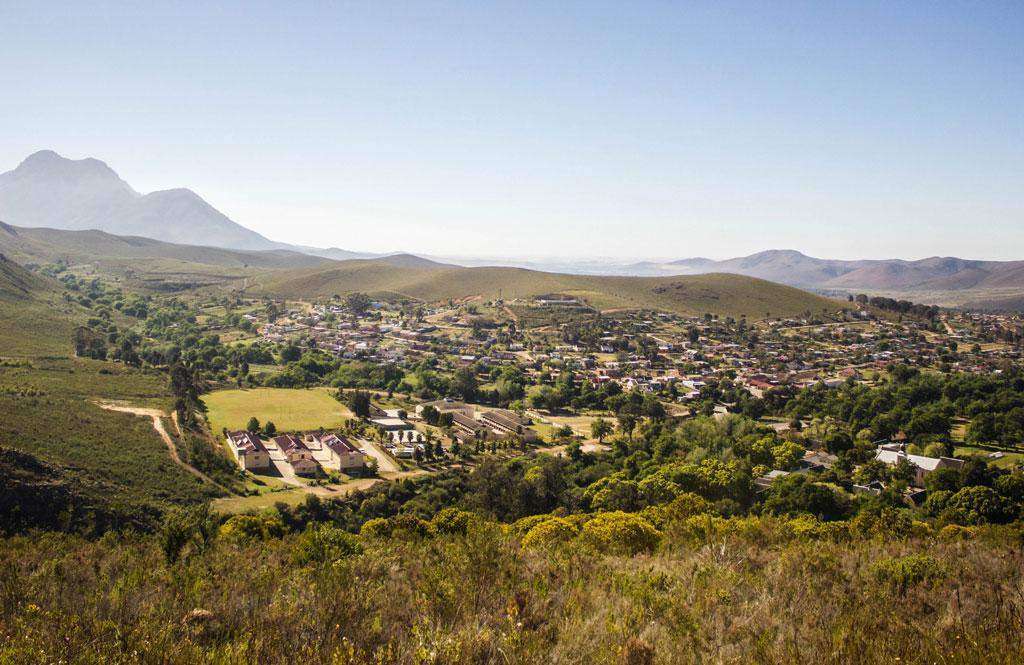History of Genadendal
- Province: Western Cape
- Overberg
- Coordinates: 34°02′S 19°33′E
- Area: 3.97 km2
- Municipality: Theewaterskloof
Genadendal, the first mission station in Southern Africa, was founded by German missionary Georg Schmidt of the Moravian Church. In 1738, Schmidt settled in Baviaanskloof (Baboon Ravine) and began preaching to the local Khoi people, a task many considered impossible. Despite the challenges, including the devastating impact of smallpox introduced by European settlers, Schmidt taught the Khoi to read and write. However, he faced strong opposition from the Dutch Reformed Church and returned to Germany in 1744.
In 1792, three more missionaries arrived in Baviaanskloof. They found the remnants of Schmidt’s mission and reconnected with some of his original converts. The missionaries built homes but initially could not establish a church without permission from the Dutch East India Company. They were even forbidden from ringing a bell to call people to school or church. After the British occupation of the Cape in 1795, the missionaries received permission to build the first chapel, which was consecrated in 1796. The village of Genadendal (Valley of Grace) began to grow, and a forge and mill were established.
The Khoekhoen laws of 1808 aimed to keep Indigenous people employed as farm labourers. In exchange for converting to Christianity, the Khoi received shelter and access to land. At its peak, Genadendal was the second-largest settlement in the Cape. However, some farmers in the Strandveld opposed the mission, feeling threatened by the skilled and educated locals who drew potential labourers away from farms. Despite this opposition, the settlement thrived and grew to include a guest house, a chemist shop, and a library.
The Industrial Revolution harmed Genadendal as factories in Cape Town began mass-producing goods at lower costs, forcing artisans and craftspeople to seek employment elsewhere. In 1838, Genadendal established the first teachers’ training college in South Africa, but the Department of Public Education closed it in 1926, arguing that coloured people did not need education because they were destined to work as farm labourers.
Genadendal’s rich history reflects the challenges and perseverance of its community, leaving a lasting legacy in South Africa’s cultural and educational landscape.
Weather in genadendal today
see all listings in genadendal
Things to see and do in Genadendal
- Cultural History Museum
- Operational water mill,
- The village with its whitewashed thatched houses is a national monument.
- A printing museum,-The original Moravian mission church houses the oldest pipe organ in South Africa
- -Oldest Moravian mission village in Africa with church buildings and a school dates back to 1738
- Genadendal Hiking Trail 2-day hike
- The bell tower next to the trading store used to be used for church services, to call children for school, and to mark the beginning and end of shifts for workers in the fields from. It was presented to Genadendal in 1793.
- The church, which was built in 1891. See the simple white-painted wooden benches, The pipe organ is said to be the oldest in South Africa.
Useful Numbers
- Police: 028 251 1000/5
- Municipality-028 254 9620
- Traffic department: Caledon-028 212 2878
- Fire: 076 614 6370 / 028 254 1690
- Water:028 254 9620
- Electricity:028 254 9620
- Ambulance: Caledon- 028 211 0177 / 10777
- Post office;028 251 8196
- Library:028 251 8130
- Closest hospital; Caledon- 028 212 1071
- Clinic: 028 254 9887
- Pharmacy;The Local Choice Pharmacy Vigne-028 254 9564
- SPCA: Overberg Veterinary Hospital: 028 212 1551 or 028 214 1211
- Schools:
- Emil Weder Secondary School-028 251 8119
- L.R. Schmidt Mor Primary School- 0282518207
- Berea Mor Primary School- 0282518271
- Museum; Genadendal Mission Museum-028 251 8582




